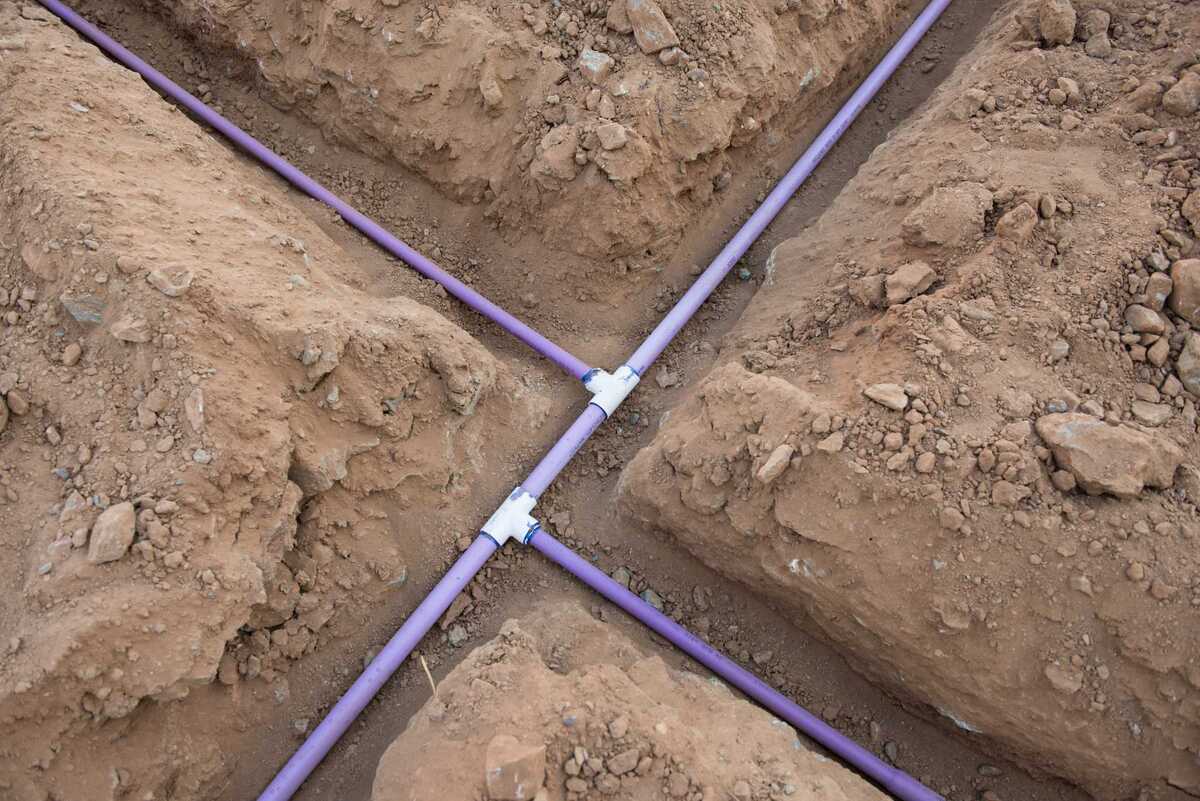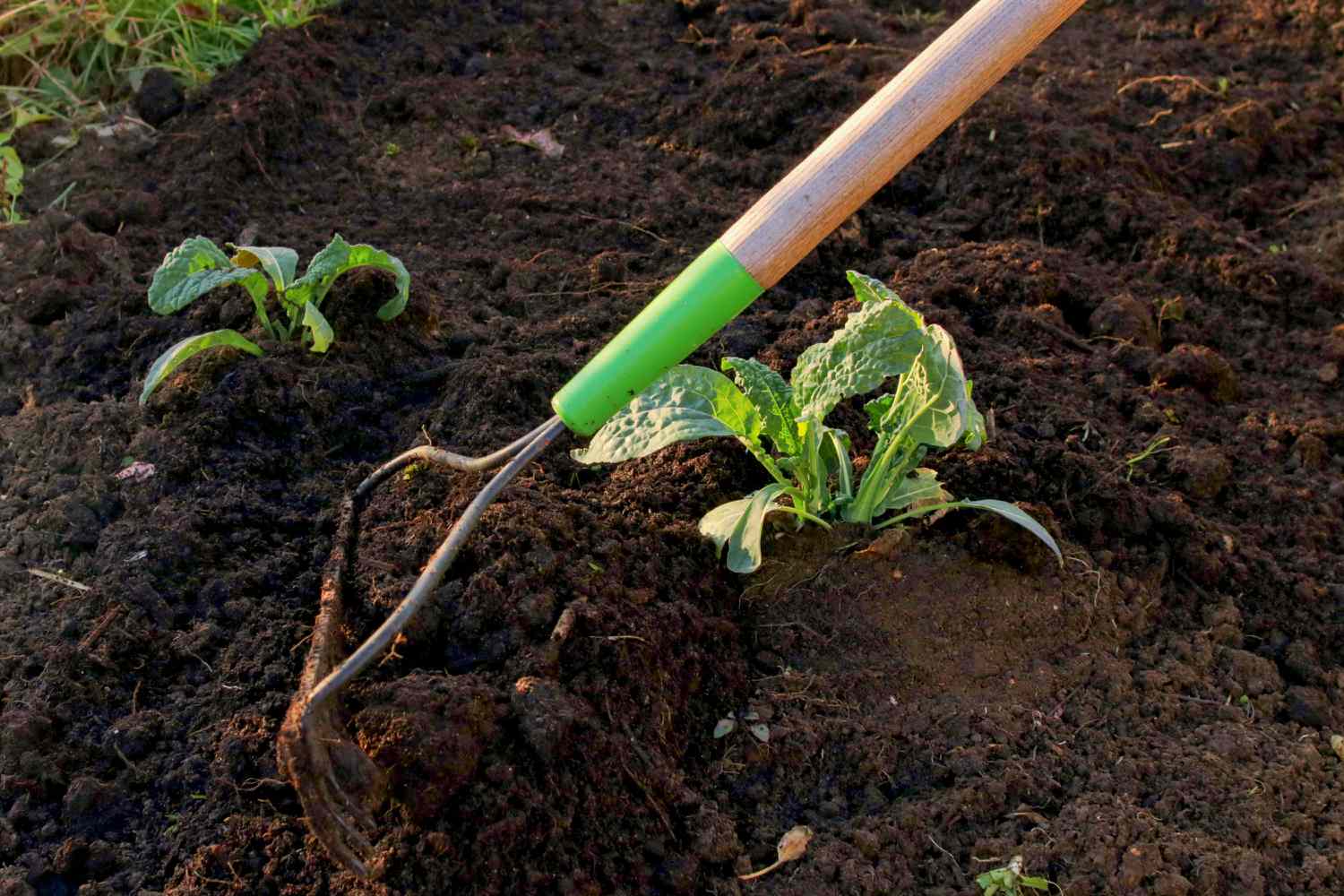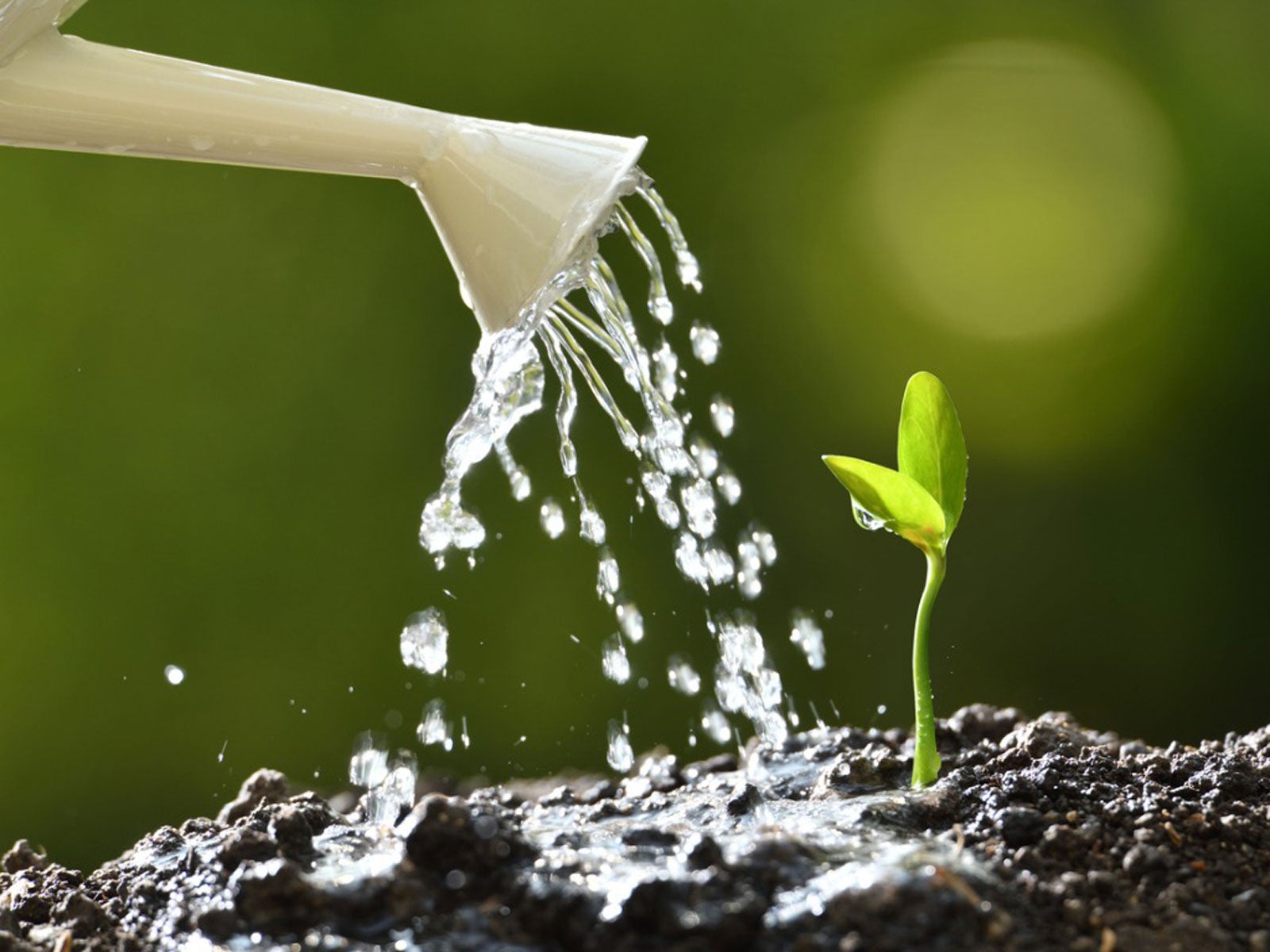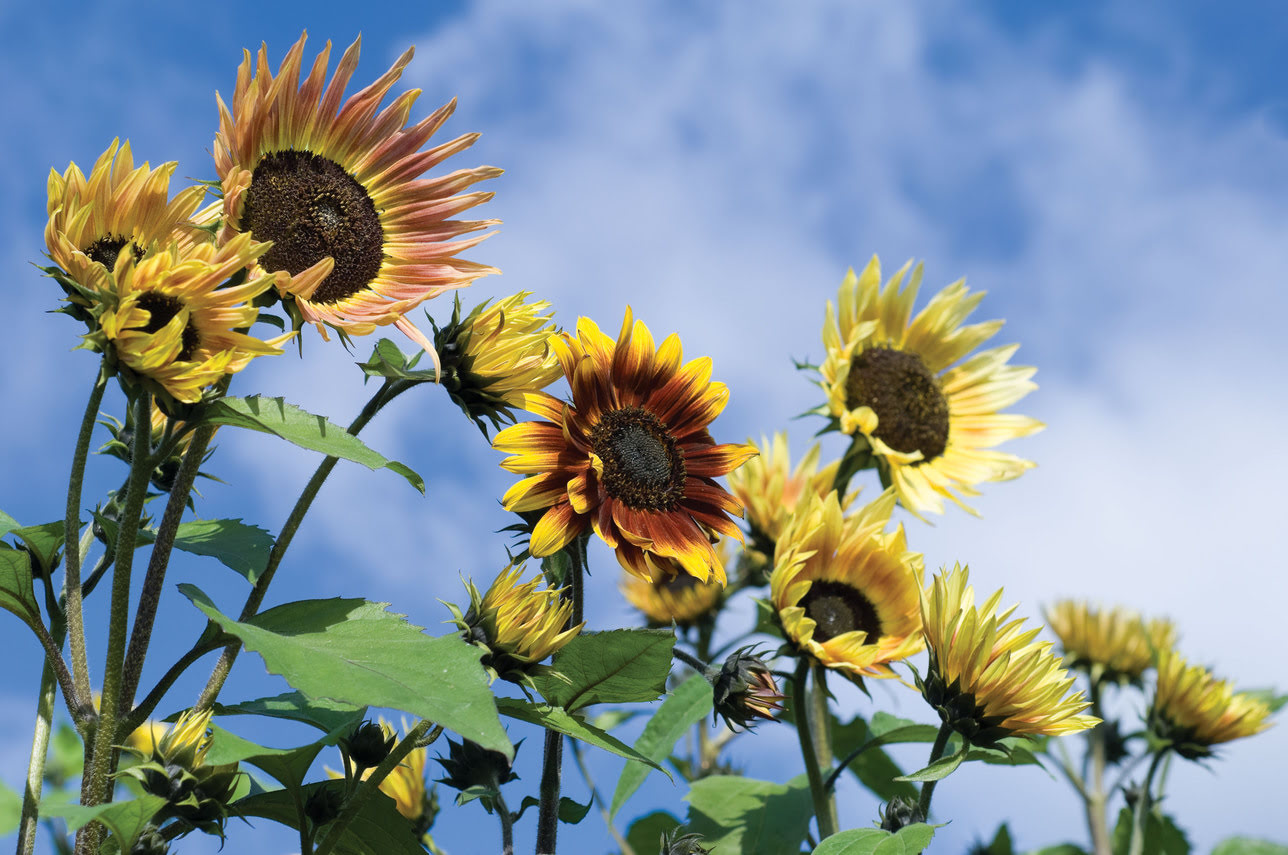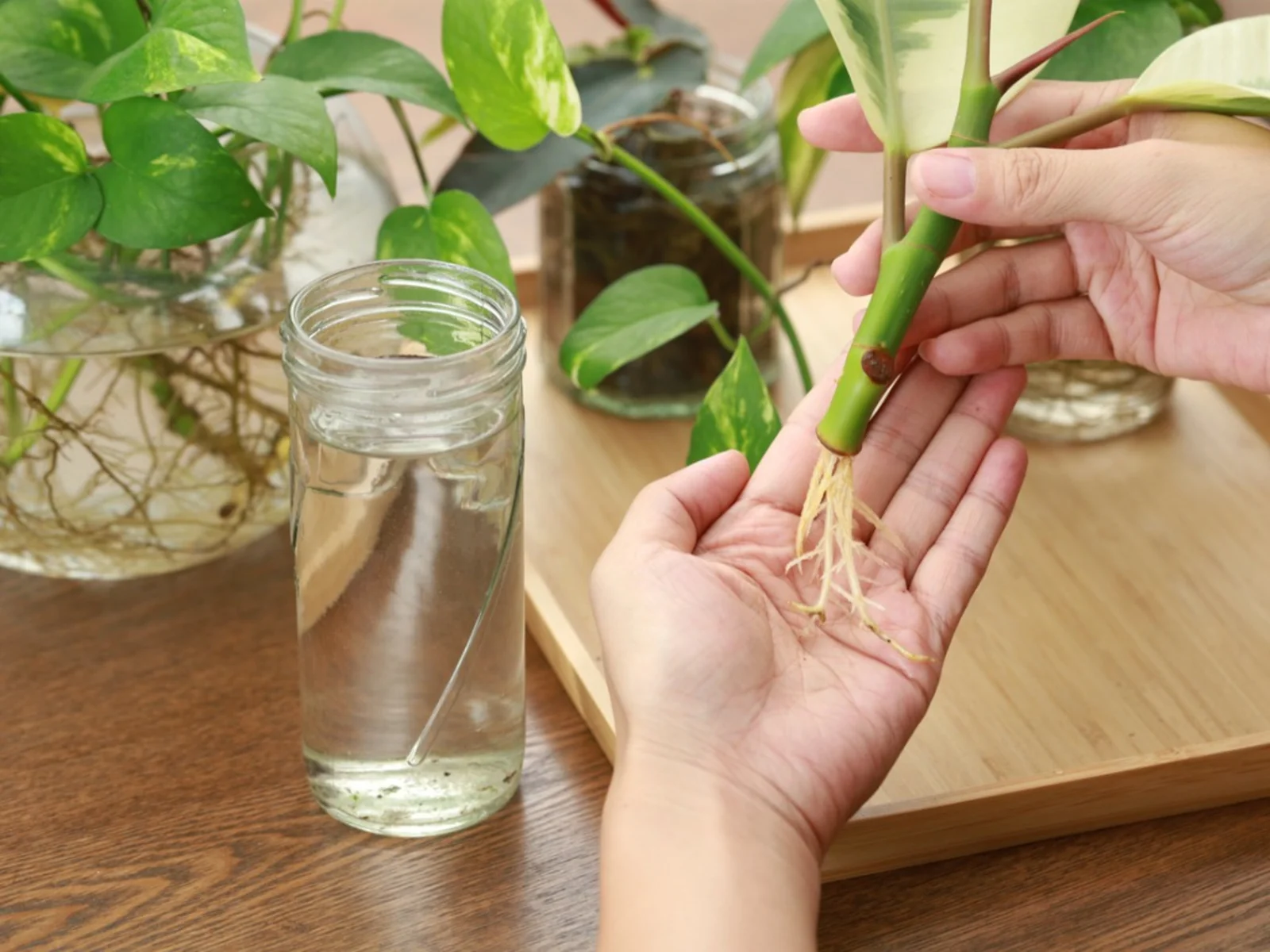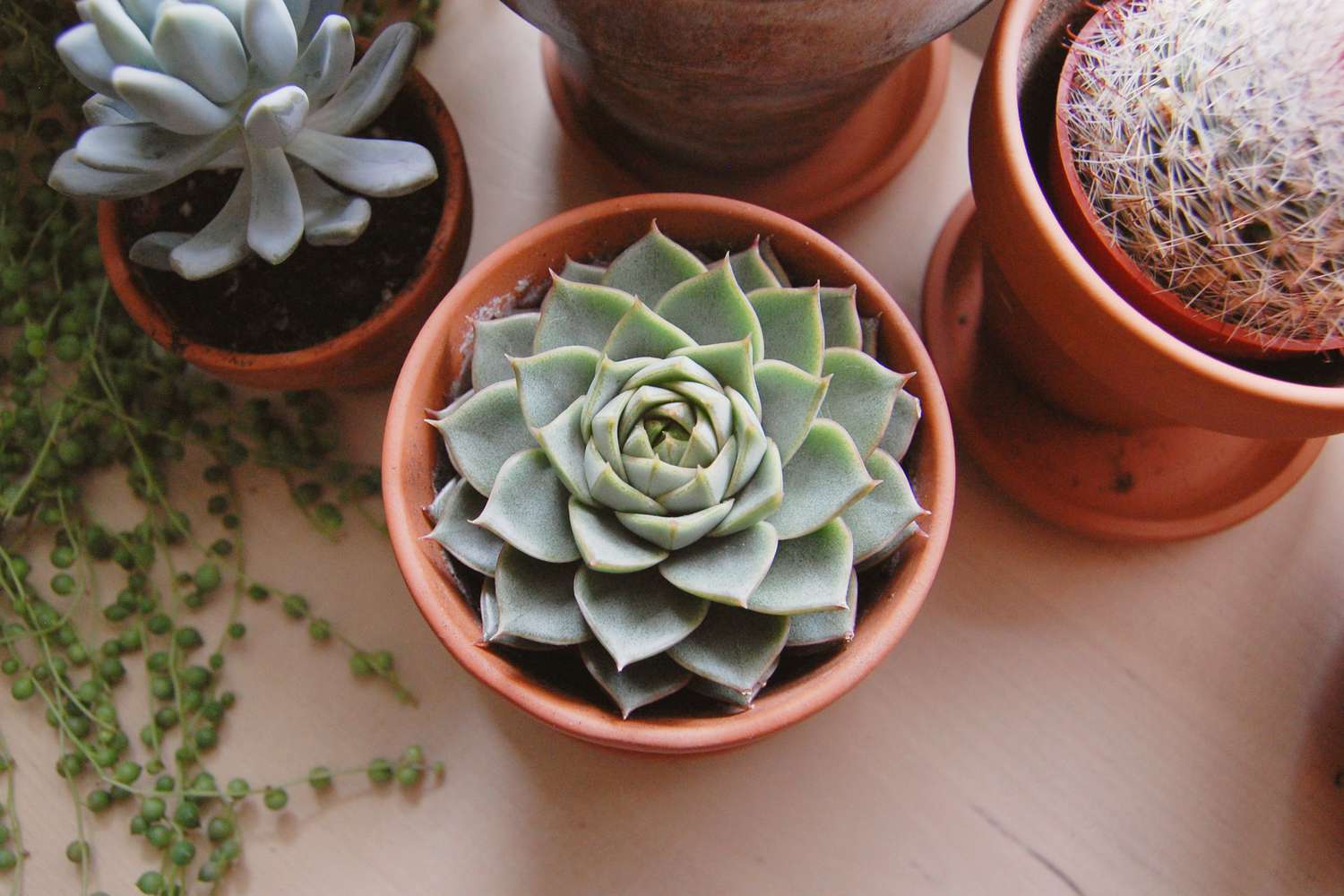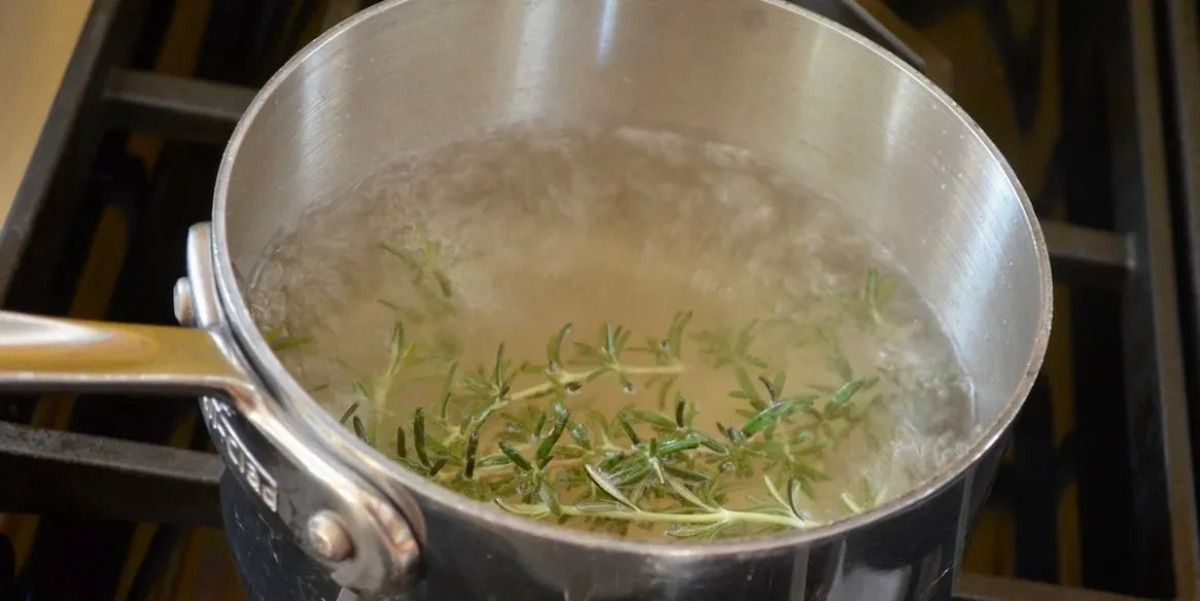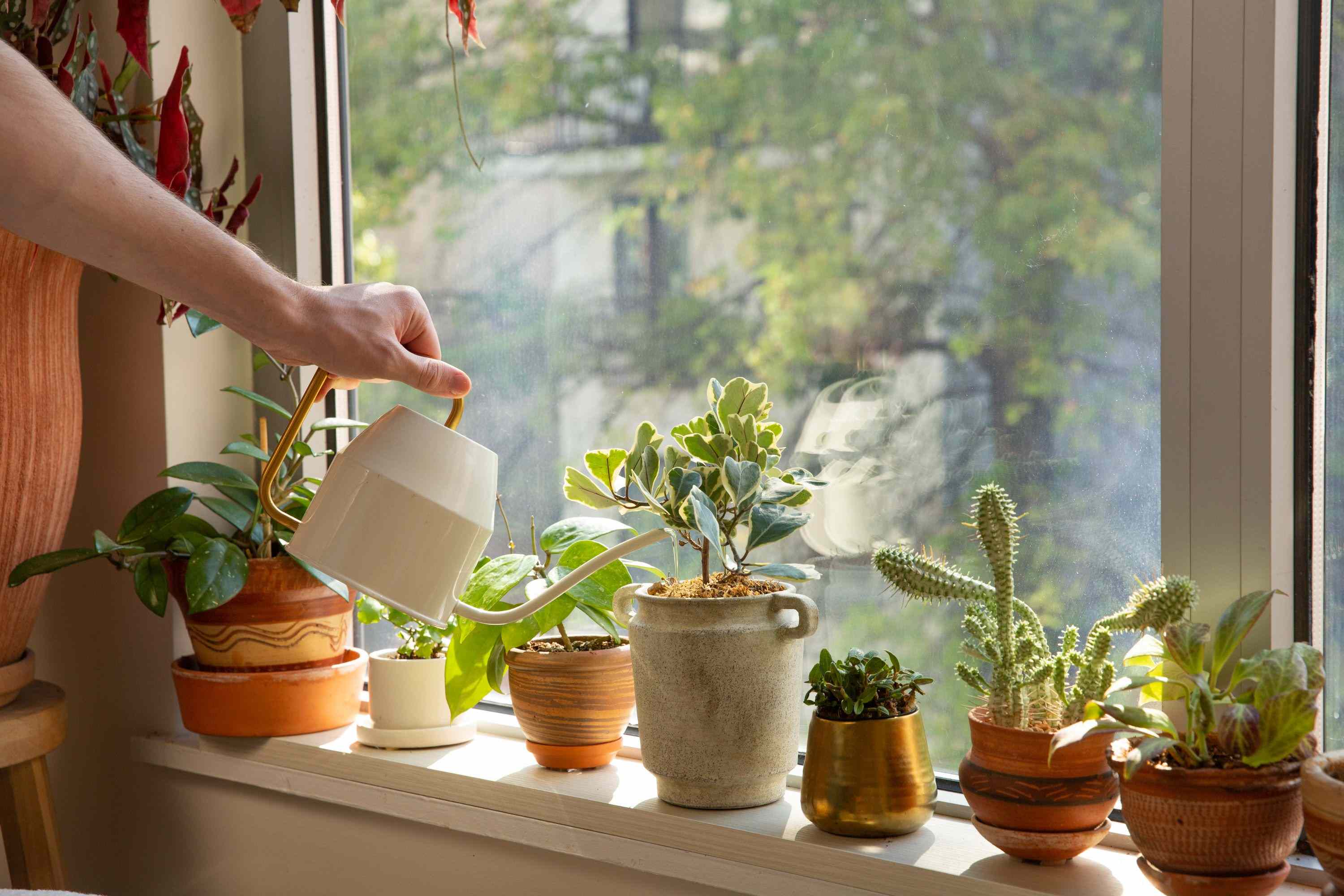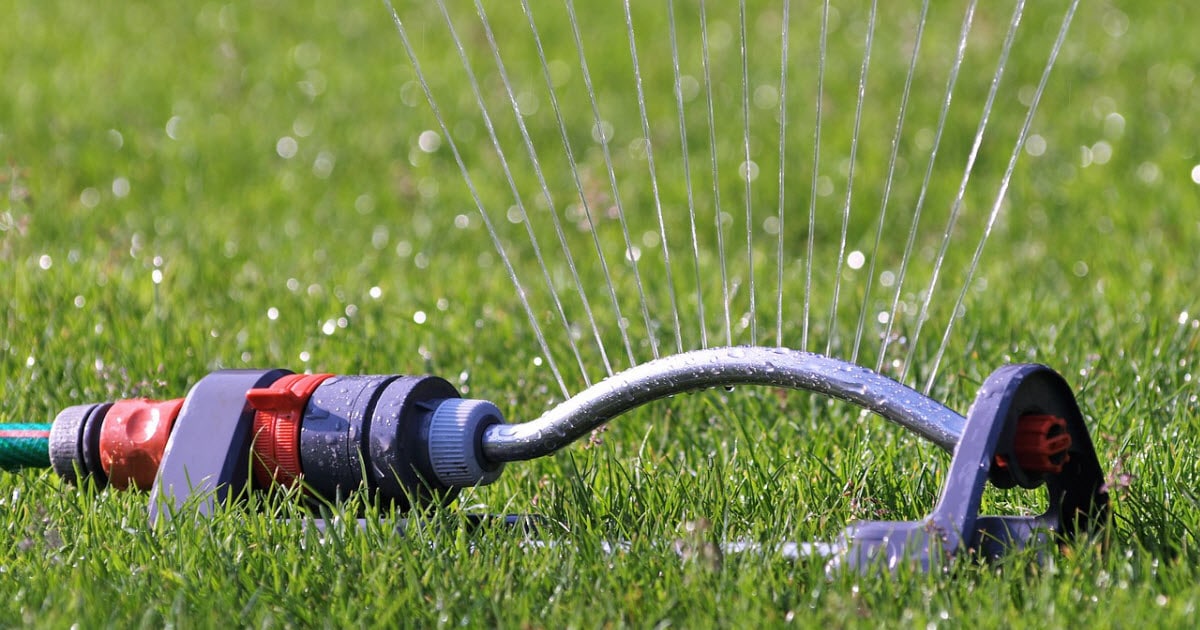Home>Gardening Tips and Tricks>Eco-Friendly Gardening>How Hot Should A Greenhouse Be
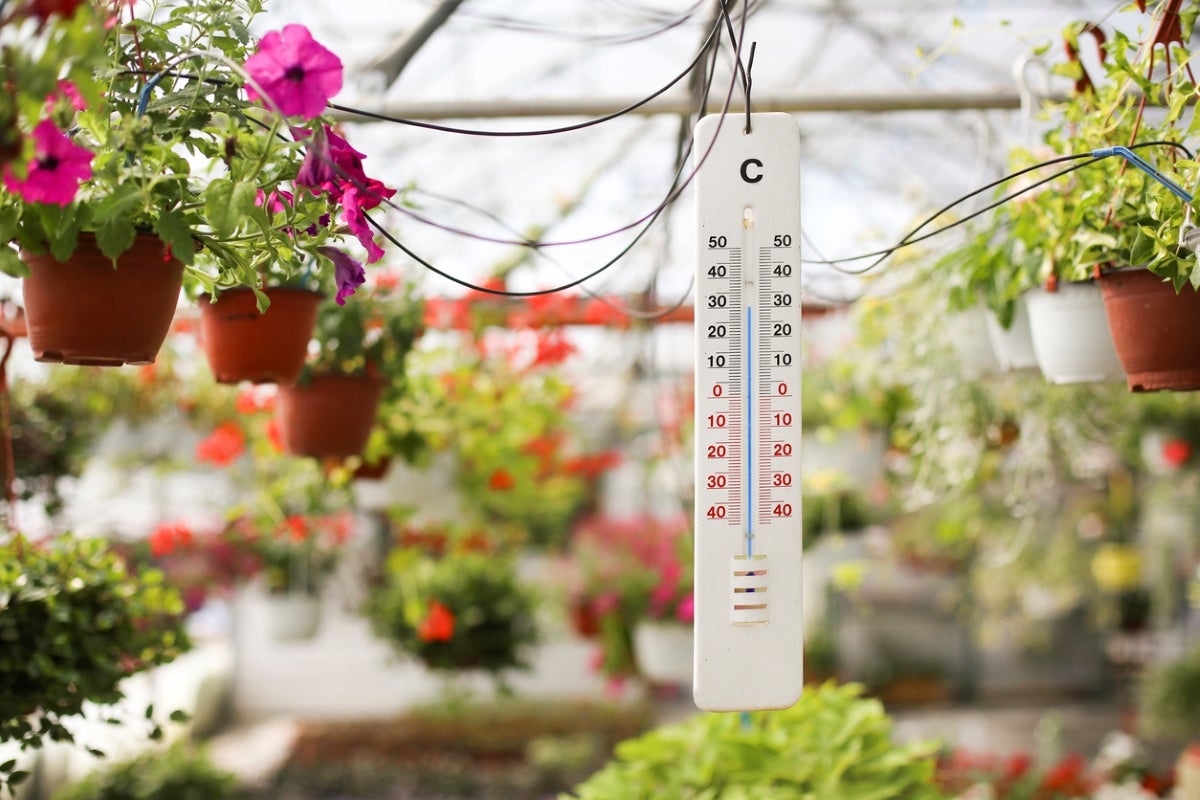

Eco-Friendly Gardening
How Hot Should A Greenhouse Be
Modified: January 22, 2024
Want to know the ideal temperature for your eco-friendly greenhouse? Discover how hot your greenhouse should be for successful eco-friendly gardening.
(Many of the links in this article redirect to a specific reviewed product. Your purchase of these products through affiliate links helps to generate commission for Chicagolandgardening.com, at no extra cost. Learn more)
Table of Contents
- Introduction
- Understanding Temperature and Greenhouse Plants
- Optimal Temperature for Different Greenhouse Crops
- Managing Temperature Variations
- Heating Methods for Greenhouses
- Importance of Ventilation in Regulating Temperature
- Monitoring and Controlling Greenhouse Temperature
- Common Mistakes to Avoid in Greenhouse Temperature Management
- Conclusion
Introduction
Welcome to the world of eco-friendly gardening! As more and more people become aware of the importance of sustainable practices, eco-friendly gardening has gained popularity. In this article, we will delve into the fascinating world of greenhouse gardening and explore the optimal temperature for greenhouse plants.
A greenhouse is a controlled environment that allows gardeners to extend the growing season, protect plants from harsh weather conditions, and create an ideal microclimate for cultivation. One crucial factor that gardeners must consider when it comes to greenhouse gardening is temperature. The temperature inside the greenhouse plays a vital role in the growth and development of plants.
Understanding temperature and its impact on greenhouse plants is essential for successfully cultivating a wide range of crops. Different plants have different temperature requirements, so it’s crucial to create the ideal conditions for each crop you intend to grow.
In this article, we will explore the optimal temperatures for various greenhouse crops, different methods of managing temperature variations, and the importance of proper ventilation. We will also dive into the methods of monitoring and controlling greenhouse temperature to ensure the best possible conditions for plant growth.
Whether you are a seasoned greenhouse gardener or just starting your journey, this article will provide valuable insights and practical tips to help you create the perfect environment for your eco-friendly garden. So let’s embark on this green adventure and discover the fascinating world of greenhouse gardening together!
Understanding Temperature and Greenhouse Plants
Temperature is a crucial factor in the growth and development of greenhouse plants. It affects various physiological processes such as photosynthesis, respiration, and transpiration. Understanding the relationship between temperature and plants is essential for creating optimal growing conditions in a greenhouse.
Plants have different temperature requirements based on their specific needs. Some plants thrive in cooler temperatures, while others prefer warmer conditions. The optimal temperature range for greenhouse plants varies depending on the stage of growth, the type of crop, and environmental factors.
Temperature influences the rate of photosynthesis, which is the process by which plants convert sunlight into energy. If the temperature is too low, photosynthesis slows down, leading to reduced growth and productivity. On the other hand, if the temperature is too high, plants can experience heat stress, which negatively impacts their growth and can even cause damage.
Another aspect affected by temperature is plant respiration. Respiration is the process by which plants convert stored energy into usable forms. Higher temperatures increase the rate of respiration, resulting in more energy consumption by the plants. This can impact growth and yield if the plant’s energy reserves are depleted faster than they can be replenished.
Transpiration, the process by which plants lose water through their leaves, is also influenced by temperature. Warmer temperatures increase the rate of transpiration, leading to higher water requirements for the plants. It’s important to maintain proper moisture levels in the greenhouse to prevent plants from becoming dehydrated.
Understanding the temperature requirements of specific greenhouse crops is crucial for successful cultivation. Some plants, such as tomatoes and peppers, prefer higher temperatures ranging from 70°F to 85°F (21°C to 29°C) during the day and slightly cooler temperatures at night. On the other hand, cool-season crops like lettuce and spinach thrive in temperatures around 60°F to 70°F (15°C to 21°C).
It’s important to note that temperature preferences can vary within plant species as well. Different cultivars or varieties may have specific temperature requirements, so it’s essential to research and choose the best-suited varieties for your greenhouse environment.
By understanding the temperature requirements of different greenhouse crops, gardeners can make informed decisions about which plants to cultivate and how to create the optimal growing conditions. The next section will delve into the specific optimal temperature ranges for various greenhouse crops, allowing you to plan your greenhouse garden with confidence.
Optimal Temperature for Different Greenhouse Crops
Each greenhouse crop has specific temperature requirements to thrive and produce a bountiful harvest. By understanding these temperature preferences, gardeners can create the ideal environment for each crop. Here, we will explore the optimal temperature ranges for some commonly grown greenhouse crops.
Tomatoes, one of the most popular greenhouse crops, thrive in temperatures between 70°F and 85°F (21°C and 29°C) during the day. Nighttime temperatures can be slightly cooler, around 60°F to 65°F (15°C to 18°C). These temperature ranges promote optimal growth, flowering, and fruit set. Extreme temperature fluctuations or exceeding these ranges can result in poor fruit development and reduced yields.
Peppers, like tomatoes, prefer similar temperature ranges for optimal growth. Daytime temperatures between 70°F and 85°F (21°C and 29°C) and nighttime temperatures between 60°F and 65°F (15°C and 18°C) are favorable for pepper plants. Consistent temperatures within this range help encourage the development of healthy foliage, sturdy stems, and abundant fruit production.
Cucumbers are another popular greenhouse crop that thrives in warmer temperatures. They prefer daytime temperatures between 75°F and 85°F (24°C and 29°C) and nighttime temperatures between 60°F and 70°F (15°C and 21°C). Maintaining these relatively high temperatures ensures optimal growth, flowering, and fruiting for cucumber plants.
Lettuce, a cool-season crop, has different temperature requirements compared to warm-season crops like tomatoes and cucumbers. Lettuce thrives in cooler temperatures, around 60°F to 70°F (15°C to 21°C) during the day and 50°F to 60°F (10°C to 15°C) at night. Higher temperatures can cause lettuce plants to bolt, or prematurely go to seed, resulting in bitter-tasting leaves and reduced quality.
Spinach, similar to lettuce, prefers cooler temperatures for optimal growth. Daytime temperatures between 50°F and 70°F (10°C and 21°C) and nighttime temperatures around 40°F to 50°F (4°C to 10°C) are ideal for spinach plants. Higher temperatures can cause spinach leaves to wilt, reducing the harvestable yield.
These are just a few examples of the optimal temperature ranges for greenhouse crops. It’s important to research and understand the specific temperature requirements of the crops you intend to grow in your greenhouse. By providing the right temperature conditions, you can ensure healthy plant growth, maximize yields, and enjoy a successful greenhouse gardening experience.
Managing Temperature Variations
Temperature variations inside a greenhouse can occur due to factors such as weather fluctuations, seasonal changes, and even the specific location of the greenhouse. It is crucial for gardeners to manage these temperature variations to provide consistent and optimal conditions for plant growth.
One effective method to manage temperature variations is by using thermal insulation. Adequate insulation helps maintain a stable internal temperature by reducing heat loss during colder periods and minimizing heat gain during hotter periods. Installing insulation materials such as bubble wrap, shade cloth, or double-glazed panels can help regulate temperature and reduce energy consumption.
Another approach is to use shade systems. By installing shade cloths or retractable screens, gardeners can control the amount of sunlight and heat entering the greenhouse. These systems are particularly useful during scorching summers or in regions with intense sunlight. They help prevent overheating and provide shade to protect plants from excessive light and heat.
Water management is essential in temperature control. Using evaporative cooling techniques such as misting systems or foggers can help reduce the temperature inside the greenhouse by evaporating water and creating a cooler environment. Additionally, maintaining proper irrigation practices and moisture levels can prevent plants from becoming stressed due to extreme heat.
Ventilation plays a crucial role in managing temperature variations. Adequate airflow helps regulate temperature, prevent excessive humidity, and reduce the risk of diseases caused by stagnant air. Installing vents, fans, or a ventilation system can promote air circulation, allowing for heat dissipation and ensuring a more consistent temperature throughout the greenhouse.
When managing temperature variations, it is important to monitor both internal and external temperatures. Using a digital thermometer or a climate control system, gardeners can measure and track temperature fluctuations accurately. This information can then be used to determine appropriate actions to maintain optimal conditions within the greenhouse.
Gardeners should also consider utilizing a shade diagram, which helps identify areas in the greenhouse that receive the most heat and areas that remain shady. By rearranging plants or adjusting shading systems accordingly, gardeners can create a more balanced and uniform temperature distribution inside the greenhouse.
By implementing these temperature management strategies, gardeners can minimize temperature variations, create a more stable and favorable growing environment, and ensure the health and productivity of their greenhouse crops.
Heating Methods for Greenhouses
Heating is a crucial component of greenhouse management, especially in colder climates or during the winter season. Proper heating methods help maintain optimal temperatures for plant growth and ensure the survival of greenhouse crops. Let’s explore some common heating methods used in greenhouses.
1. Gas or Oil Heating: Gas or oil heaters are commonly used in larger greenhouse operations. These heating systems burn natural gas or oil to produce heat, which is distributed through ducts or pipes. They provide consistent and efficient heating, allowing for precise temperature control. However, they require a steady supply of fuel and proper ventilation to avoid any potential risks.
2. Electric Heating: Electric heaters are a popular choice for smaller-scale greenhouse setups. They are easy to install, require minimal maintenance, and can be controlled more precisely. Electric heaters come in various forms, including radiant heaters, forced-air heaters, or fan heaters. They provide reliable heating, but they can be more expensive to operate compared to other heating methods.
3. Biomass Heating: Biomass heating involves burning organic materials such as wood, pellets, or agricultural waste to generate heat. This eco-friendly heating method is a sustainable alternative to traditional fossil fuel-based systems. Biomass boilers or furnaces can be used to heat water or air, which is then distributed throughout the greenhouse. It is important to ensure proper ventilation and regularly clean the biomass systems to maintain efficient operation.
4. Geothermal Heating: Geothermal heating harnesses the heat from the Earth’s natural thermal energy. It involves using a network of pipes buried underground to transfer heat into the greenhouse. Geothermal systems are energy-efficient and provide consistent heating throughout the year. However, they require a significant initial investment and proper installation to make use of the Earth’s geothermal resources effectively.
5. Solar Heating: Solar heating utilizes the sun’s energy to warm the greenhouse. This method involves the use of solar panels or solar collectors to capture and convert sunlight into thermal energy. The heated air or water is then circulated throughout the greenhouse. Solar heating is a sustainable and cost-effective option, especially in regions with ample sunlight. It can be supplemented with other heating methods during periods of low sunlight or high energy demand.
When choosing a heating method for your greenhouse, consider factors such as your climate, budget, and specific crop requirements. It’s important to select a system that provides reliable, efficient, and safe heating to create a favorable environment for plant growth.
Remember to insulate your greenhouse properly to minimize heat loss and maximize the effectiveness of your chosen heating method. Regular maintenance and monitoring are also essential to ensure the heating system is working optimally and to address any issues promptly.
By employing a suitable heating method, gardeners can create a warm and nurturing environment for their greenhouse crops, enabling year-round cultivation and maximizing yields.
Importance of Ventilation in Regulating Temperature
Ventilation is a crucial component of greenhouse management, playing a vital role in regulating temperature and creating an optimal growing environment for plants. Proper ventilation helps maintain airflow, control humidity levels, prevent the buildup of harmful gases, and regulate temperature fluctuations. Let’s explore the importance of ventilation in detail.
1. Temperature Regulation: Ventilation allows for the exchange of air inside and outside the greenhouse, helping regulate temperature. During hot periods, proper airflow through vents, fans, or ventilation systems helps dissipate excess heat, preventing overheating and heat stress in plants. Conversely, in cooler periods, ventilation helps bring in fresh air, preventing stagnation and maintaining a more stable and favorable temperature for plant growth.
2. Humidity Control: Effective ventilation is essential for controlling humidity levels in the greenhouse. Poor air circulation and high humidity can create a humid environment, leading to the growth of fungal diseases, mold, and rot. Ventilation helps remove excess moisture, helping to prevent the development of these issues and promoting a healthier growing environment for plants.
3. Carbon Dioxide (CO2) Exchange: Plants require carbon dioxide for photosynthesis, the process by which they convert sunlight into energy. Proper ventilation ensures the exchange of CO2, allowing plants to access this vital component for their growth and productivity. By ensuring a consistent supply of fresh air, ventilation helps maintain optimal CO2 levels, enhancing plant growth and overall yield.
4. Removal of Harmful Gases: Many greenhouse operations involve the use of heaters or fuels, which can release harmful gases such as carbon monoxide (CO), nitrogen dioxide (NO2), or sulfur dioxide (SO2). Proper ventilation helps remove these gases, promoting a safe and healthy environment for both plants and gardeners. Adequate airflow can prevent the accumulation of these gases, reducing the risk of plant stress or human health hazards.
5. Disease Prevention: Good ventilation can aid in disease prevention by reducing the likelihood of fungal and bacterial infections. Proper airflow helps to dry plant foliage, reducing the conditions favorable for disease development. It also assists in the dispersion of spores, preventing the spread of pathogens among plants. Adequate ventilation can contribute to overall plant health and reduce the need for chemical interventions.
Effective greenhouse ventilation can be achieved through several methods, including natural ventilation through vents, doors, or windows, as well as mechanical ventilation systems such as fans, louvers, or exhaust vents. It is important to consider the greenhouse design, size, and specific crop requirements when planning the ventilation system.
Regular monitoring of temperature, humidity levels, and CO2 concentrations is essential to ensure ventilation is optimized for plant growth. Adjustments may need to be made as weather conditions change or seasons fluctuate. Regular cleaning and maintenance of vents, fans, and other ventilation equipment will help maintain their efficiency and effectiveness throughout the growing season.
By prioritizing ventilation in greenhouse management, gardeners can create a well-ventilated and balanced environment for their plants. This contributes to healthy plant growth, reduces the risk of diseases, and ultimately leads to more successful and fruitful greenhouse gardening.
Monitoring and Controlling Greenhouse Temperature
Monitoring and controlling the temperature in a greenhouse is essential to provide the ideal climate for plants to thrive. By closely monitoring temperature fluctuations and utilizing effective control methods, gardeners can ensure optimal growing conditions and maximize the success of their greenhouse. Let’s explore the importance of monitoring and controlling greenhouse temperature in detail.
1. Temperature Monitoring: Regular temperature monitoring is crucial to understanding the fluctuations and patterns within the greenhouse. Using a digital thermometer or a climate control system, gardeners can accurately measure and record temperatures at various locations within the greenhouse. This data helps identify potential issues and guides decision-making regarding the need for temperature adjustments.
2. Automatic Climate Control Systems: Automated climate control systems offer precise control over greenhouse temperature. These systems use sensors to monitor temperature levels and activate heating or cooling mechanisms as needed. By using sophisticated algorithms, these systems can maintain a stable and favorable temperature range, reducing the risk of plant stress or damage due to extreme cold or heat.
3. Heating and Cooling Systems: Depending on the greenhouse and the specific temperature requirements of the plants, gardeners may need to utilize heating or cooling systems to regulate temperature. Heating systems, such as radiant heaters or forced-air heaters, can be utilized during colder periods to raise the temperature. Cooling systems, including evaporative cooling or shade systems, can be employed to lower the temperature during excessively hot conditions. It is important to select the appropriate system based on the size and needs of the greenhouse.
4. Thermostats and Timers: Thermostats and timers are useful tools for controlling greenhouse temperature. Thermostats can be set to activate heating or cooling systems when the temperature reaches a certain threshold. Timers can be used to control the duration of heating or cooling, ensuring that energy is used efficiently and plants are not exposed to extreme temperature fluctuations.
5. Natural Ventilation: Utilizing natural ventilation methods, such as vents, windows, or doors, can help regulate temperature by allowing fresh air to enter and hot air to escape. This method is particularly effective during mild weather conditions. It is important to position vents strategically to promote proper airflow and avoid creating localized hot or cold spots within the greenhouse.
6. Data Logging and Analysis: Collecting and analyzing temperature data over time enables gardeners to uncover patterns and trends within the greenhouse. This information can help identify environmental conditions that lead to temperature fluctuations and guide decision-making in adjusting greenhouse management strategies. By implementing changes based on data analysis, gardeners can continuously improve temperature regulation in their greenhouse environment.
Remember, different plants have varying temperature requirements, so it’s important to research their specific needs to provide optimal conditions. Regular monitoring, using appropriate systems and controls, and implementing adjustments based on data analysis are key to maintaining the proper temperature range for successful greenhouse gardening.
Common Mistakes to Avoid in Greenhouse Temperature Management
Proper temperature management is crucial for successful greenhouse gardening. However, there are common mistakes that gardeners may inadvertently make when it comes to temperature regulation. By being aware of these mistakes and taking proactive measures, gardeners can avoid potential pitfalls and create the best possible environment for plant growth. Let’s explore some common mistakes to avoid in greenhouse temperature management.
1. Poor Insulation: Insufficient or improperly installed insulation can result in significant heat loss during colder periods and hinder effective temperature regulation. Inadequate insulation can lead to higher energy costs and make it challenging to maintain stable temperatures. Ensure that your greenhouse is properly insulated, paying attention to walls, roof, doors, and any other potential areas of heat loss.
2. Overheating: Allowing the greenhouse to become excessively hot poses a risk to plant health and can inhibit growth. This can occur due to inadequate ventilation, excessive sunlight exposure, or inefficient temperature control systems. Regularly monitor internal temperatures and implement appropriate cooling strategies, such as shading and ventilation, to prevent overheating.
3. Inadequate Ventilation: Insufficient ventilation can lead to poor air circulation, increased humidity, and the accumulation of harmful gases. Without proper airflow, temperature regulation becomes challenging, and plants can experience stress or become susceptible to diseases. Ensure that your greenhouse has sufficient vents, fans, or ventilation systems to promote adequate air exchange.
4. Inaccurate Temperature Monitoring: Not accurately monitoring temperatures can lead to ineffective temperature regulation. Relying on guesswork or infrequent measurements can result in significant temperature fluctuations that can harm plants. Utilize digital thermometers or climate control systems to regularly monitor temperatures at various locations within the greenhouse and adjust accordingly.
5. Lack of Proper Heating/Cooling Systems: Failing to invest in appropriate heating and cooling systems can hinder temperature management efforts. Inadequate heating systems can leave plants vulnerable to cold temperatures, while insufficient cooling systems can lead to excessive heat stress. Ensure that your greenhouse is equipped with suitable heating and cooling systems based on your region and the temperature requirements of the plants you are cultivating.
6. Inconsistent Temperature Adjustments: Making sudden and drastic temperature adjustments can shock plants and impede their growth. Gradual and incremental adjustments are recommended when making changes to the greenhouse temperature. Maintain regular monitoring and make gradual adjustments to ensure a smooth transition for your plants.
7. Neglecting Plant-Specific Temperature Requirements: Different plants have specific temperature preferences, and neglecting their needs can hinder their growth and productivity. Research the temperature requirements for the plants you are cultivating and ensure that the greenhouse conditions align with those preferences. Avoid trying to grow plants that have conflicting temperature requirements within the same greenhouse space.
By avoiding these common mistakes, gardeners can effectively manage greenhouse temperature and create the optimal environment for plant growth. Prioritize insulation, ventilation, and accurate temperature monitoring while considering the specific needs of the plants you are cultivating. By implementing proper temperature management techniques, you can ensure healthy and thriving plants in your greenhouse.
Conclusion
Proper temperature management is crucial for the success of any greenhouse gardening endeavor. Understanding the relationship between temperature and plant growth is essential for creating the optimal conditions for your plants to thrive. By implementing effective temperature monitoring and control strategies, gardeners can provide a stable and favorable environment that promotes healthy plant growth, maximizes yields, and reduces the risk of plant stress or diseases.
Throughout this article, we explored various aspects of greenhouse temperature management, from understanding temperature’s impact on plant physiology to the optimal temperature ranges for different greenhouse crops. We also discussed the importance of ventilation in regulating temperature, as well as common mistakes to avoid in greenhouse temperature management.
By taking the time to research and understand the temperature requirements of your plants, you can make informed decisions regarding heating and cooling systems, ventilation methods, and insulation. Regularly monitoring temperature, humidity levels, and CO2 concentrations allows you to make necessary adjustments and optimize the greenhouse environment for plant growth.
It’s important to remember that greenhouse temperature management is a dynamic process. Weather conditions, seasonal changes, and the specific needs of your crops may require ongoing adjustments and fine-tuning. Stay vigilant, gather temperature data, and analyze patterns to ensure the best possible growing conditions within your greenhouse.
Eco-friendly gardening practices, such as utilizing sustainable heating methods or incorporating renewable energy sources, can further enhance the energy efficiency and environmental impact of your greenhouse. By incorporating eco-friendly strategies and practices, you can work towards a more sustainable and responsible approach to greenhouse gardening.
As you continue on your greenhouse gardening journey, keep in mind that the goal is to create an environment that mimics the natural conditions for your plants, providing them with optimal temperature, light, and humidity. With proper temperature management, your greenhouse can become a haven for healthy and thriving plants, allowing you to enjoy a bountiful harvest and the beauty of nature’s growth all year round.

